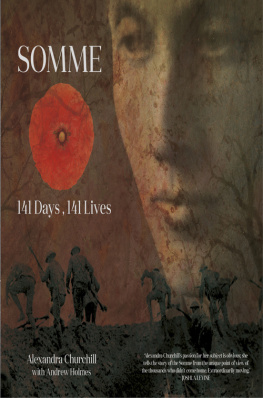First published in 1905, Doctor Glas is considered to be Swedish novelist Hjalmar Sderbergs masterpiece. The beautiful young wife of the repellant Reverend Gregorius confides to Glas that her sex life is making her miserable and begs for his help. Smitten with her, he agrees, even though she already has another lover. He does intervene, but when it becomes clear that the Reverend will not give up his rights, Glas begins planning his murder. Arranged in the form of a journal, this fascinating, deeply moral (yet never moralizing) novel... offers the voyeuristic thrill of reading over the doctors shoulder as he wrestles with his conscience. PUBLISHERS WEEKLY
Splendid.... Sderberg [is] a marvelous writer. THE NEW YORKER
Written in a world before the two world wars, the novel has an icy wind in it, a sense of weeding the world so that only the strongest and loveliest can live. Sderberg offers both a moral and a roadmap. These days, thats a fairly distasteful combination. LOS ANGELES TIMES
Even the Swedes were dismayed by Sderbergs grim-grey novel when it was published in [1905], but today it is recognized as a Scandinavian masterpiece. TIME
This is a moving book. It is in the form of a journal, written by the doctor, and conveys with powerful economy the close, confined environment, and the articulate despair of a man who has missed love, let alone marriage. TIMES LITERARY SUPPLEMENT
When one reads the novel from the perspective of a new century, what is particularly striking is the way Glass conscience seems haunted by the troubles of the past hundred years. THE LONDON TIMES
A masterpiece of enduring power, Doctor Glas confronts a chilling moral quandary with gripping intensity. NEWSWEEK

Translation Copyright 1998 by Rochelle Wright
First edition 1998 by University of Wisconsin/Madison Scandinavian
Studies Department
Introduction Copyright 2015 by Tom Rachman
First Pharos Editions Printing April 2015
All rights reserved.
Library of Congress Cataloging-in-Publication Data is available.
Cover and interior design by Faceout Studio

Published by Pharos Editions, an imprint of Counterpoint
2560 Ninth Street, Ste. 318
Berkeley, CA 94710
www.pharoseditions.com
www.counterpointpress.com
Distributed by Publishers Group West
10 9 8 7 6 5 4 3 2 1
e-book ISBN 978-1-9404-36227

Contents
by Tom Rachman

BY TOM RACHMAN

From his caf table in central Stockholm, a young doctor contemplates the summer street, where pedestriansand perhaps life itselfare passing him by. Outwardly calm, he is inwardly fevered. For Dr. Glas is pondering murder.
The young wife of a foul old preacher has visited the doctors examination room with a confession. Her repugnant husband forces himself on her, does so often, regardless of her pleas for pity. What can she do? And what can the doctor do?
Tyko Gabriel Glas is a man learned about the body, but intimate only with the mind. By his own description, he is an ugly fellow, a virgin still at age 33, and resigned to solitude, finding companionship in the intellectual ferment of fin-de-sicle Europe. (Hjalmar Sderbergs novel came out in 1905.) Told in diary entries, Doctor Glas questions social hypocrisies, challenging the conventions against abortion and euthanasia, along the way citing Schopenhauer, Kant, Maupassant, Strindberg, Ibsen, Nietzschean admixture of philosophers and authors from a time when the scholars proposed rules for living, and the writers tested them in tales.
I want to sit comfortably in a theater box and watch people murder each other on stage, but I myself have no business there. I want to keep out of itleave me in peace! Dr. Glas declares, adding, Ive read Crime and Punishment and Thrse Raquin. Which is to say, he knows how miserably the murderers fared in the novels by Dostoevsky (1866) and Zola (1867). (When Dostoevskys book first came out in Swedish in 1894, it was not called Crime and Punishment but had the name of its protagonist, Raskolnikow, meaning that Sderbergs title, Doctor Glas, would have echoed both its Russian and French antecedents.)
Doctor Glas and Crime and Punishment, in particular, share much. They describe troubled young protagonists estranged from society, peering in from the margins, witnessing fading religiosity, and edging toward the same question: What meaning has Thou shalt not kill if no holy power enforces the commandment?
However, Crime and Punishment betrays its intent from the titlecrime cannot occur but that punishment follows, Dostoevsky argues. As for Zola, he disavowed the criminality in Thrse Raquin, claiming merely to depict raw humanity, never to endorse its villainy. Sderberg then was the boldest of the three, disputing the agonies of a penitent Raskolnikov and floating a more shocking proposition: that perhaps one could end a life for a just motive, without punishment, without remorse. In different forms, this idea underpins many political battles of today, over right-to-die legislation, abortion laws, the death penalty, targeted assassinations.
Upon publication, Doctor Glas, Crime and Punishment and Thrse Raquin each provoked scandal and denunciations. Critics feared that if literature were to cleanse killing of its traditional taboos, then the act could be justified by any twisted logic. As it happened, in the 20th century, ideologies such as Nazism and Stalinism effected just such a nightmarish project. And yet the secular Western societies that emerged thereafter did not persist in massacres. On the contrary, data indicate a steady decline of violence in the West over the centuries.
How then do questions raised in Doctor Glas and its literary cousins resonate today, in this period of paradoxesa time when the average teenager has probably glimpsed a beheading video online but never known a single death beyond the screen. In Sweden, this novel remains a classic. It has inspired films, at least one theatrical production, and two spin-off novels, one from the clergymans perspective, another from his wifes. Meanwhile, murder stories are all the rage, fueled by the Nordic Noir trend, not least Stieg Larssons The Girl with the Dragon Tattoo series, which is rife with wicked acts avenged through moral brutality. Despite this, Sweden remains a markedly peaceable society, its pages spattered with blood, its streets clean.
The Norwegian writer Karl Ove Knausgaard, himself a resident of Sweden, argues that the philosophical struggles of the past have ended up primarily an adolescent concern. They were the only ones who were preoccupied with existential issues, he writes. Dostoevsky has become a teenagers writer, the issue of nihilism a teenage issue.
Its as if the dispute between Raskolnikov and Dr. Glas over the spiritual cost of killing has ended. Who won? Read Sderbergs intriguing novel, and decide.
TOM RACHMAN
HJALMAR SDERBERG (18691941) was born in Stockholm, Sweden, the city so intimately associated with his literary works. He studied briefly at the University of Uppsala and was employed as a civil servant before turning to journalism and eventually establishing himself as a free-lance writer. After a painful divorce from his first wife, he married a Danish woman and moved to Copenhagen, where he resided for the last twenty-five years of his life.
Next page















